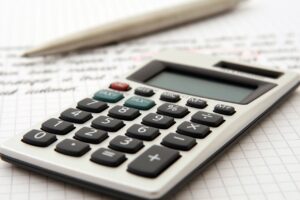All public sector employers pay basic salaries to their employees according to the respective pay scale. Several other components are then calculated with respect to the basic salary and are then added to it to calculate the take-home amount. One such important component is Dearness Allowance or DA.
What is Dearness Allowance?
Dearness Allowance is paid by the government to its employees as well as a pensioner to offset the impact of inflation. The effective salary of government employees requires constant enhancement to help them cope with the increasing prices. Despite several measures by the government to control the rate of inflation, only partial success has been achieved because the prices move according to the market.
It, therefore, becomes essential for the government to shield its employees from the adverse effects of inflation. As the impact of inflation varies according to the location of the employee, dearness allowance is calculated accordingly. Thus, DA varies from employee to employee based on their presence in the urban, semi-urban or rural sector.
Calculation of Dearness Allowance(DA).
As DA is provided to employees to protect against the price rise in a particular financial year, it is calculated twice every year – in January and July. The formula to calculate the dearness allowance was changed in 2006 by the Government. Presently, DA is calculated as per the following formula:
For Central Government Employees
DA% = [(Average of AICPI (Base Year 2001 = 100) for the last 12 months – 115.76)/115.76] x 100
For Public Sector Employees
DA% = [(Average of AICPI (Base Year 2001 = 100) for the last 3 months – 126.33)/126.33] x 100
Here, AICPI means the All-India Consumer Price Index.
Treatment of Dearness Allowance under Income Tax
As per the latest updates, DA is fully taxable for salaried employees. If the employee has been provided with an unfurnished rent-free accommodation, it becomes that part of the salary up to which it forms the retirement benefit salary of the employee, provided that all other pre-conditions are met. The Income Tax rules in India require the dearness allowance component to be mentioned separately in the returns that have been filed.
Types of Dearness Allowance
For calculation, DA is divided into two separate categories: Industrial Dearness Allowance and Variable Dearness Allowance.
Industrial Dearness Allowance (IDA) applies to the Public sector employees of the Central Government. The Industrial Dearness Allowance for public sector employees undergoes quarterly revision depending on the Consumer Price Index (CPI) to help offset the impact of rising levels of inflation.
Variable Dearness Allowance (VDA) applies to the employees of the Central Government. It is revised every six months according to the Consumer Price Index to help offset the impact of rising levels of inflation. VDA in itself is dependent on three different components as given below.
- Base Index – remains fixed for a particular period.
- Consumer Price Index – impacts VDA as it changes every month.
- The variable DA amount that has been fixed by the Government remains fixed unless the government revises the basic minimum wages.
Role of Pay Commissions in the calculation of Dearness Allowance
The 7th Pay Commission must evaluate and change the salaries of public sector employees based on the various components that make up the final salary of an employee. Therefore, DA is also considered by the Pay Commissions while preparing the subsequent pay commission report.
It is the responsibility of the pay commissions to take into account every factor that helps with the calculation of the salaries. This also includes the periodic reviewing and updating of the multiplication factor for the calculation of DA.
Latest changes in DA
The Dearness Allowance (DA) for central government employees has recently been hiked by 4%, bringing it to 50% from the previous rate of 46%. This increase is effective from January 1, 2024.
Additionally, Dearness Relief (DR) for central government pensioners has also risen by 4% to reach 50%.
Let’s break down how this change impacts the take-home salary of central government employees using an example: Suppose a central government employee has a basic salary of Rs 45,700 per month. Previously, at a DA rate of 46%, their dearness allowance was Rs 21,022. With the new DA rate of 50%, their dearness allowance will increase to Rs 22,850. This means they will receive an additional Rs 1,828 in their salary (Rs 22,850 – Rs 21,022).
According to the recommendations of the 7th Pay Commission, other allowances and components of the salary will also increase when DA reaches 50%. These include House Rent Allowance (HRA), daily allowance, gratuity ceiling, hostel subsidy, Children’s education allowance, Special allowance for childcare, TA on transfer and Mileage allowance for own transport.
These adjustments help central government employees keep up with the rising cost of living. In summary, central government employees can expect a significant boost in take-home salary due to the recent DA hike.
Dearness Allowance for Pensioners
Pensioners, in this case, are those retired employees of the central government who are eligible for either the individual or family pension from the government. Every time the Pay Commission rolls out a new salary structure, the change is also reflected in the pension of the retired employee. Likewise, if the Dearness Allowance is changed by a particular percentage, the pension of the retired personnel is revised accordingly.
Pensioners cannot get DA when re-employed, and DA is granted on a time scale or fixed pay. However, pensioners can sometimes get DA when they are re-employed, limited to their last drawn pay. DA is not paid to pensioners when they reside in a foreign country during re-employment. But pensioners residing abroad without being re-employed are eligible to get DA on their pension.
Difference between DA and HRA
Dearness Allowance must not be confused with the HRA as they are two separate components and are treated differently for income tax. One significant difference is that HRA applies to both private and public sector employees, while only public sector employees are entitled to DA. Additionally, there are certain Tax exemptions applicable to HRA which are not available for the DA.
Dearness Allowance Merger
Ever since the revision of the calculation formula, the DA for public sector and central government employees has been consistently rising. Presently, it stands at 50% of the basic salary. This has been a result of the constant enhancement in the DA every year to offset the adverse effects of inflation. As per the rules, it is a practice to merge the DA with the basic salary when it crosses the level of 50%. If this is done, it would mean a significant salary hike for the employees as all other components of the salary are calculated based on the basic salary. The demand has been raised with the Government, and a decision is soon expected on these lines. If the decision is made in favour of the employees, it would significantly boost their salarie



